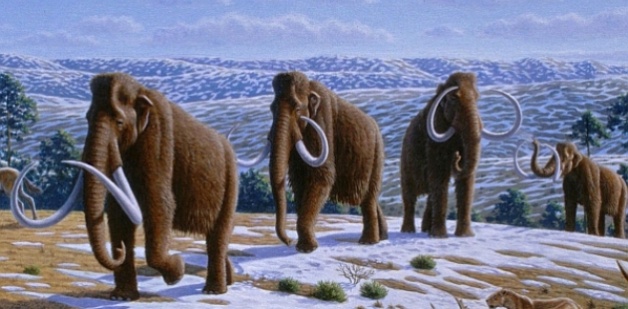maar deze mammoet is zeer goed bewaard gebleven en ze hebben zelfs bloed van het dier en spierweefsel
IK ZEG KLONEN!!!

link
Dit is een hele unieke vondst de laatste goed bewaarde mammoet was gevonden in 1901.
hele prestatie als je zo'n keutel kan makenquote:
Geef me een goede bak bruine bonen, en je zult het geen keutel maar een mega bolus noemen.quote:Op woensdag 29 mei 2013 19:18 schreef theguyver het volgende:
[..]
hele prestatie als je zo'n keutel kan maken
quote:Op woensdag 29 mei 2013 19:22 schreef SherlockHolmes het volgende:
[..]
Geef me een goede bak bruine bonen, en je zult het geen keutel maar een mega bolus noemen.
Met een beetje geluk komen er binnenkort duizenden van die beesten uit de grond...
Straks wordt het een plaagquote:Op woensdag 29 mei 2013 19:46 schreef SeLang het volgende:
Global warming
Met een beetje geluk komen er binnenkort duizenden van die beesten uit de grond...
Echte bontkraagjesquote:
hi ha ho
Ja leuk!quote:Op woensdag 29 mei 2013 19:46 schreef SeLang het volgende:
Global warming
Met een beetje geluk komen er binnenkort duizenden van die beesten uit de grond...
The Thaw (2009) - IMDb
Alles z'n voordelen.quote:Op woensdag 29 mei 2013 19:46 schreef SeLang het volgende:
Global warming
Met een beetje geluk komen er binnenkort duizenden van die beesten uit de grond...
bron: Universiteit van Jakoetskquote:Cryoprotective properties of mammoth blood: discovery of NEFU scientists may prove a hypothesis of Canadian professor
The carcass of a female mammoth found on Maliy Lyakhovsky Island by the expedition of North-Eastern Federal University, gave a food for reflection of scientific community. The uniqueness of the malolyakhovsky mammoth is that it was the first well-preserved carcass for last 112 years. But the main interest is cryoprotective properties of blood from the ancient animal.
“Liquid blood was found in ice cavities below the belly and when we broke these cavities with a poll pick, the blood came running out. Interestingly, the temperature at the time of excavation was – 7 to – 10ºC”, said Semyon Grigoriev, head of the Museum of Mammoths named after P.A. Lazareva of NEFU Institute of Applied Ecology of the North.
On 29 May, members of the expedition said that their discovery may prove the research results of Canadian scientist. “We found an article published in 2010 of the University of Manitoba professor Kevin Campbell in “Nature Genetics” Journal”, where he makes an assumption that the hemoglobin of mammoth blood could continue delivering oxygen to body tissues even in extreme cold. Thus, our discovery could be an actual evidence of this assumption”, said Semyon Grigoriev. According to the head of expedition, they contacted Kevin Campbell. Canadian scientist expressed a wish to cooperate with the colleagues from Yakutia.
The samples of mammoth have been taken to Yakutsk for bacterial examination in order to detect causative agents of especially dangerous infections. The researchers suppose that the next blood and tissues analysis will give the priceless scientific materials, especially for a joint project of NEFU and Sooam Biotech Research Foundation in cloning a mammoth.
For detailed information on the Museum of Mammoth follow here
 Op
Op  Op
Op 